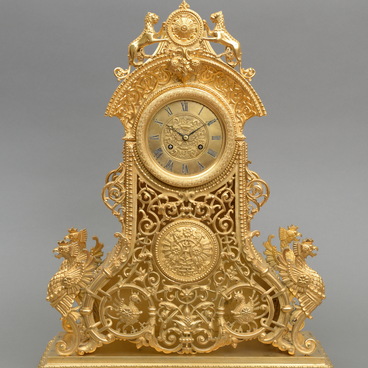The silver salt shaker is made in the shape of a stein. In the old days, in Russia were closed cabinets, caskets and boxes in which dishes and delicacies were kept were called steins. Almost until the end of the 18th century, steins of various types and forms were widely used in the everyday culture of all classes, and later, almost until the beginning of the 20th century, they served as furniture and a place for storing food and salt only in the folk environment. In addition, a utility table on which dishes brought from the kitchen were placed before serving them to the table was also called a stein.
Steins usually stood in a prominent place in the house, so craftsmen always tried to decorate them with paintings or carvings. Especially skillfully decorated were those of them in which salt was stored and served to the table. In Russia the guest traditionally was always greeted with bread and salt, showing him his affection and respect. Bringing a loaf of bread with a salt shaker meant that the salt shaker could be left as a gift. That is why, the salt shaker was called ‘gift’.
In folk culture salt had an important symbolic meaning, played the role of a talisman, a measure of time and experience. The salt shaker, like the breadbasket, was necessarily part of the girl’s dowry.
In the second half of the 19th century, decorative artists and jewelers turned their attention to this item. Salt shakers made of silver were especially popular — they were often presented as a gift. The salt shaker on display was made by an unknown jeweler in the 1880s on honoring some important guest. The jeweler engraved the names of all donators on the inner surface of the lid.
The salt shaker is decorated with a pattern made in the technique of champlevé enamel, which was widely used by jewelers of Ancient Rus from the 11th-12th centuries. The pattern on the item was first engraved and minted, and the enamel mass was placed in the formed recesses and heated. The enamel melted and filled the engraved cells, while the surface of the item remained smooth.
Steins usually stood in a prominent place in the house, so craftsmen always tried to decorate them with paintings or carvings. Especially skillfully decorated were those of them in which salt was stored and served to the table. In Russia the guest traditionally was always greeted with bread and salt, showing him his affection and respect. Bringing a loaf of bread with a salt shaker meant that the salt shaker could be left as a gift. That is why, the salt shaker was called ‘gift’.
In folk culture salt had an important symbolic meaning, played the role of a talisman, a measure of time and experience. The salt shaker, like the breadbasket, was necessarily part of the girl’s dowry.
In the second half of the 19th century, decorative artists and jewelers turned their attention to this item. Salt shakers made of silver were especially popular — they were often presented as a gift. The salt shaker on display was made by an unknown jeweler in the 1880s on honoring some important guest. The jeweler engraved the names of all donators on the inner surface of the lid.
The salt shaker is decorated with a pattern made in the technique of champlevé enamel, which was widely used by jewelers of Ancient Rus from the 11th-12th centuries. The pattern on the item was first engraved and minted, and the enamel mass was placed in the formed recesses and heated. The enamel melted and filled the engraved cells, while the surface of the item remained smooth.

